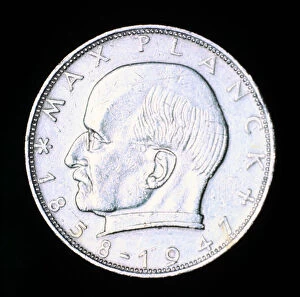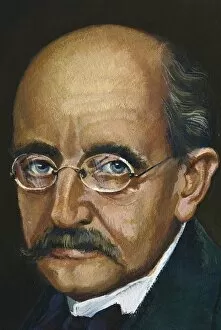Planck Collection
Max Planck, a renowned German theoretical physicist, made significant contributions to the field of quantum mechanics
All Professionally Made to Order for Quick Shipping
Max Planck, a renowned German theoretical physicist, made significant contributions to the field of quantum mechanics. Born in 1858, he revolutionized our understanding of the fundamental laws governing the behavior of matter and energy. In this captivating portrait from 1925, Max Planck exudes an air of intellectual brilliance. His piercing gaze reflects his deep contemplation and dedication to unraveling the mysteries of the universe. With his groundbreaking work on blackbody radiation and quantization, Planck laid the foundation for modern physics. However, it is important not to confuse him with Mrs. William Gordon Ver Planck and her son Samuel Hopkins Ver Planck captured in a photograph dating back to around 1828. This unknown creator immortalized their image, offering us a glimpse into their lives during that era. The ESA's Planck satellite has also played a crucial role in expanding our knowledge about cosmic phenomena. It provided us with breathtaking visuals like the polarization of the Cosmic Microwave Background (CMB), revealing intricate patterns hidden within space-time itself. Moreover, thanks to data collected by Planck, we now have comprehensive maps showcasing matter between Earth and the edge of our observable universe. These all-sky representations offer glimpses into vast cosmic landscapes filled with gas clouds and charged particles – reminding us just how small we are in comparison. One such composite image presents our Milky Way galaxy as if celebrating its own existence – a festive mishmash captured by ESA's Planck satellite. Another map highlights dust ablaze throughout our galaxy – emphasizing its dynamic nature while simultaneously obscuring parts yet to be explored fully. Max Karl Ernst Ludwig Planck left an indelible mark on science through his pioneering research and unwavering commitment to uncovering nature's secrets. His legacy continues to inspire generations of physicists who strive towards further unlocking the mysteries that surround us all.











